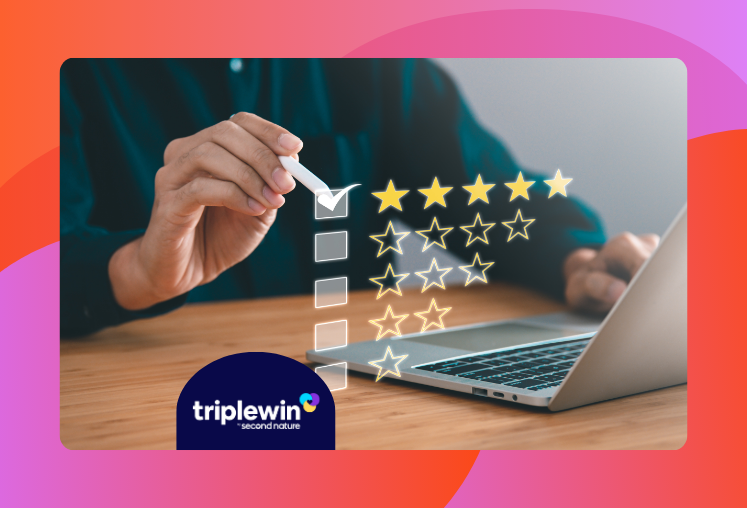What we'll cover
Security deposits are an industry standard for property management. But new innovations are helping reduce some of the traditional pain points associated with security deposits.
Here’s the thing; For property managers and investors, security deposits provide critical protection from financial fallout if the rental property is damaged. For renters, though, paying a security deposit upfront can pose a prohibitive cost, and an expensive security deposit can make it harder for the property manager to fill vacancies.
Enter security deposit insurance – a modern solution that's reshaping rental agreements.
We’re diving into everything you need to know about security deposit insurance: how it's different from the traditional security deposit, the pros and cons, and the scoop on the best providers out there.
So, whether you're a seasoned property management business owner or just getting started, we’ve got you covered. (And that was an insurance pun.)
What is security deposit insurance?
Security Deposit Insurance is a coverage that residents purchase, which covers potential damages or unpaid rent during their lease period. Instead of paying a hefty upfront cash deposit, residents pay a fee for this insurance, which typically costs a fraction of the traditional deposit amount.
For example, imagine a tenant moving into a home where the usual security deposit is $1,000. With security deposit insurance, instead of paying this amount upfront, the tenant might pay an insurance fee of $50 each month for a 12-month lease. This fee provides coverage to the owner for the duration of the lease, similar to a standard deposit, but at a lower cost to the tenant.
This system not only eases the financial burden for tenants but also provides property managers and owners with coverage against potential lease violations, making it a potentially attractive option for both parties.

What is the difference between a traditional deposit and security deposit insurance?
A traditional security deposit is a lump sum paid by the resident to the owner (or held by the property manager) at the beginning of the lease. It’s often the cost of one month’s rent or another negotiated amount. The security deposit acts as a safeguard for the property manager in case of any damage to the property by the end of the tenancy.
If there is significant damage, the property manager and owner can withhold refunding the deposit, depending on local and state laws that govern the use of security deposits.
Security deposit insurance, on the other hand, gives residents a way to avoid paying that large lump sum at the beginning of their lease. Instead, they can pay for insurance. Like any insurance policy, they pay a monthly premium for coverage. The premium will be considerably less than a one-time security deposit.
When a resident has security deposit insurance, their property manager can file a claim to the insurance company over things like lost rent or damages. The resident doesn’t get any of their monthly payments back at move out.
Let’s go over some of the pros and cons of security deposit insurance.
Related: How to Write a Security Deposit Return Letter + Free Template
What are the benefits of security deposit insurance?
Security deposit insurance provides benefits to renters, property managers (or a landlord), and property owners. Here are a few of the top benefits.
1. Reduces the upfront cost of move-in and protects residents' ability to pay rent
We’ll just say it plainly: Moving is a huge, stressful life event that costs a LOT of money. One of the major costs of moving into a new rental home is the traditional security deposit. Renters may be paying two times or more the amount of monthly rent just to sign a lease.
Security deposit insurance solves that upfront-cost challenge by providing a service at a much lower monthly cost.
From the property management perspective, that means residents can keep more of their money to ensure they pay rent on time, and they may be happier to cover other fees like pet deposit fees, a resident benefits package fee, etc.
2. Helps reduce vacancies
Because security deposit insurance removes one of the biggest financial barriers to signing a new lease, it can be a great way to reduce a property’s time on the market.
By advertising that you accept security deposit alternatives like insurance, you can differentiate your properties on listings and fill them more quickly.
3. Covers unpaid rent
This is one of the best benefits for property managers and owners. Traditional security deposits typically can’t be used until the end of a tenancy. But with security deposit insurance, property managers can file a claim over unpaid rent. The insurance typically will cover this.
Some states allow property managers to cover missed rent payments with a security deposit, but some do not. If you’re in one of the states that don’t, you may want to consider allowing security deposit insurance.
4. Claims can be made at any time during the lease
Like the coverage for unpaid rent, security deposit insurance can cover claims at any time throughout a resident’s lease. You don’t necessarily have to wait to be reimbursed for damage.

What are the drawbacks of security deposit insurance?
Of course, there are a few risks to security deposit insurance and reasons you may not want to make it an option for your residents.
Here are some of the cons of security deposit insurance.
1. Not all claims will be accepted
When you, as the property manager, submit a claim for coverage of unpaid rent or property damage, the insurance company may not decide to cover it. Each claim is evaluated at the time of loss to determine if coverage is applicable.
Things like normal wear and tear are not covered. Plus, you’re not the one who gets to make the final decision.
2. Not all insurance providers or products are reliable
This is true particularly because the industry itself is a newer innovation. Residents may pay monthly premiums but then find the coverage is not all that great. All of us have probably had some kind of experience like this with other types of insurance, too. Some claims aren’t covered, and some insurance companies promise a lot and deliver very little.
3. Residents are on the hook for monthly payments
Generally, security deposit insurance is cheaper than a cash security deposit. But if the lease is long-term, the monthly payments may end up being more expensive than just paying a lump sum at the beginning of the lease.
For property managers, you want to consider if it’s ideal for your residents to have an additional monthly fee they’re responsible for on top of rent.
4. It can be a hassle
Nobody likes submitting or following up on insurance claims. It’s a hassle! The process is often clunky and slow and requires a lot of management. It may take weeks or months to get paid for a claim.
Property managers may also need to put time and energy into educating residents or clients about how the security deposit insurance works and the differences in their options. (Or you could show them this article!)
Best security deposit insurance providers
Security deposit insurance is fairly new to the SFR property management world. Here are three of the best security deposit insurance products on the market right now.
1. LeaseLock
LeaseLock is the category leader in this particular security deposit alternative space. In October 2023, the company surpassed $9 billion in insured leases.
LeaseLock offers a modern solution in security deposit insurance, replacing traditional cash deposits with a unique insurance model. Their insurance coverage provides property managers with protection while easing the upfront financial burden for residents.
The monthly cost to the resident is generally around $30, with $5,000 in coverage for unpaid rent and damage.
2. Obligo
Obligo was launched in New York and helps property managers reduce their risks while making security deposits more affordable for renters. Residents pay a small monthly fee for the service while Obligo sets up secure billing authorization between property managers and the resident. The property manager is then authorized to charge the resident for damages up to a pre-set maximum.
It’s essentially the same as the type of pre-authorization hold that a hotel might place on a guest’s credit card. Residents won’t be charged unless they cause damage or miss rent, and they will only be charged up to a certain amount.
Some residents will not qualify for Obligo’s services, depending on credit rating, etc. The company has a high trust rating on Trustpilot.
3. Rhino
Rhino offers a slightly less straightforward insurance model but is a leading solution in security deposit alternatives. Through a surety bond model, their service provides robust protection for property owners while significantly reducing move-in costs for residents.
Rhino is sued in over two million homes in the U.S. and claims to save renters over 90% on moving costs. Some former customers complain about unreliable costs and being on the hook for claims.
Final thoughts
Security deposit insurance is reshaping the rental landscape, offering benefits for both residents and property managers. Providers like LeaseLock, Rhino, and Obligo are at the forefront of this change, providing innovative solutions that ease financial burdens and streamline rental transactions. As the industry evolves, these services may become a new standard in property management.
The goal is to make life easier for renters, owners, and property managers. At Second Nature, our goal is the same. We help property managers provide the best residential services and solutions, all while building opportunities for ancillary revenue.
We provide a package with solutions like renters insurance, credit reporting, and resident rewards, all built to help protect a resident’s financial stability and reduce risk to your property management company. Plus, it’s completely handled for you, so your team can focus on what they do best: manage your properties.




